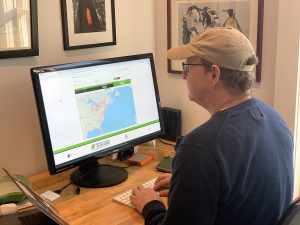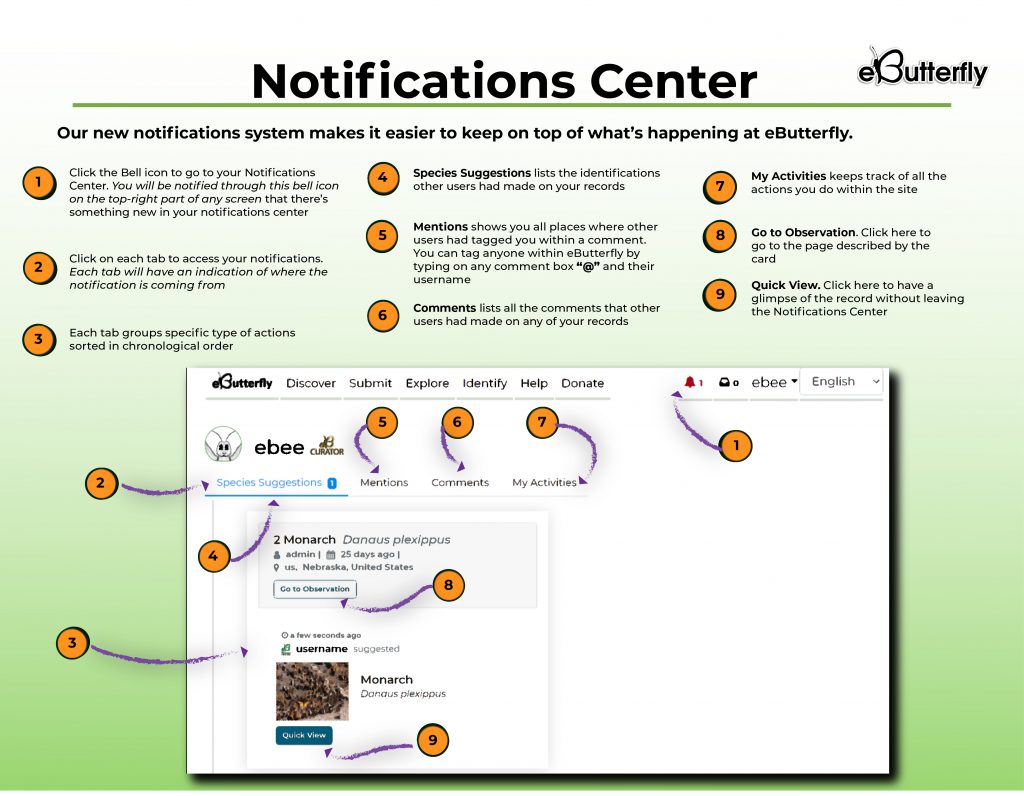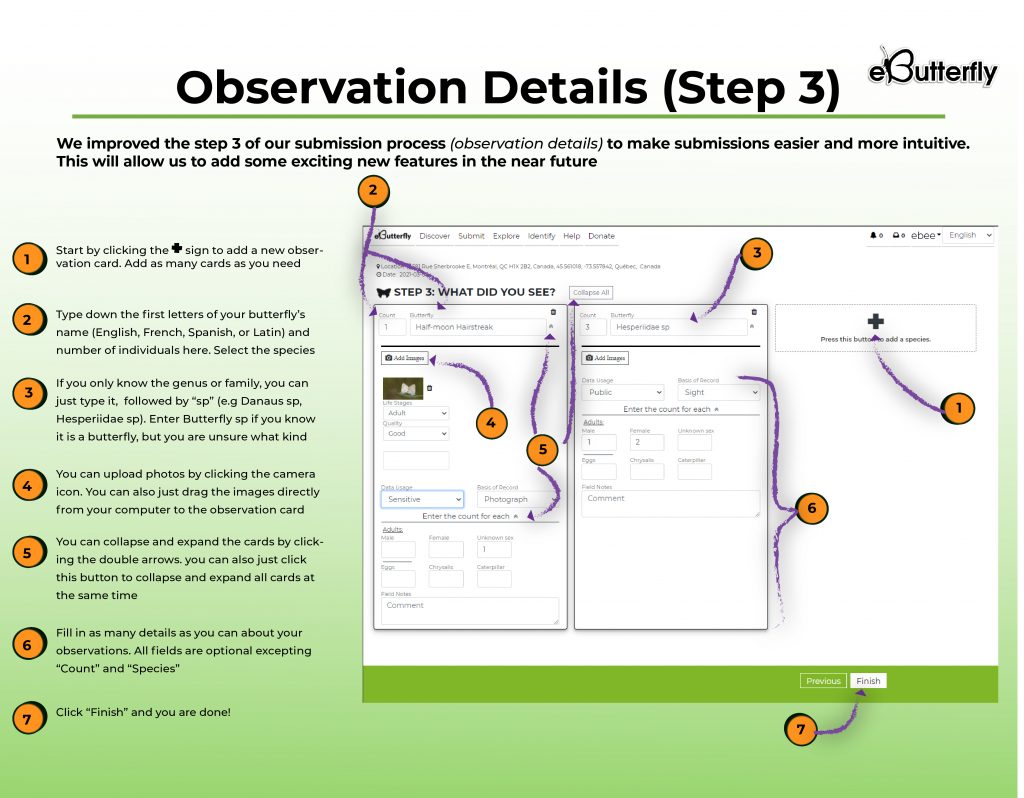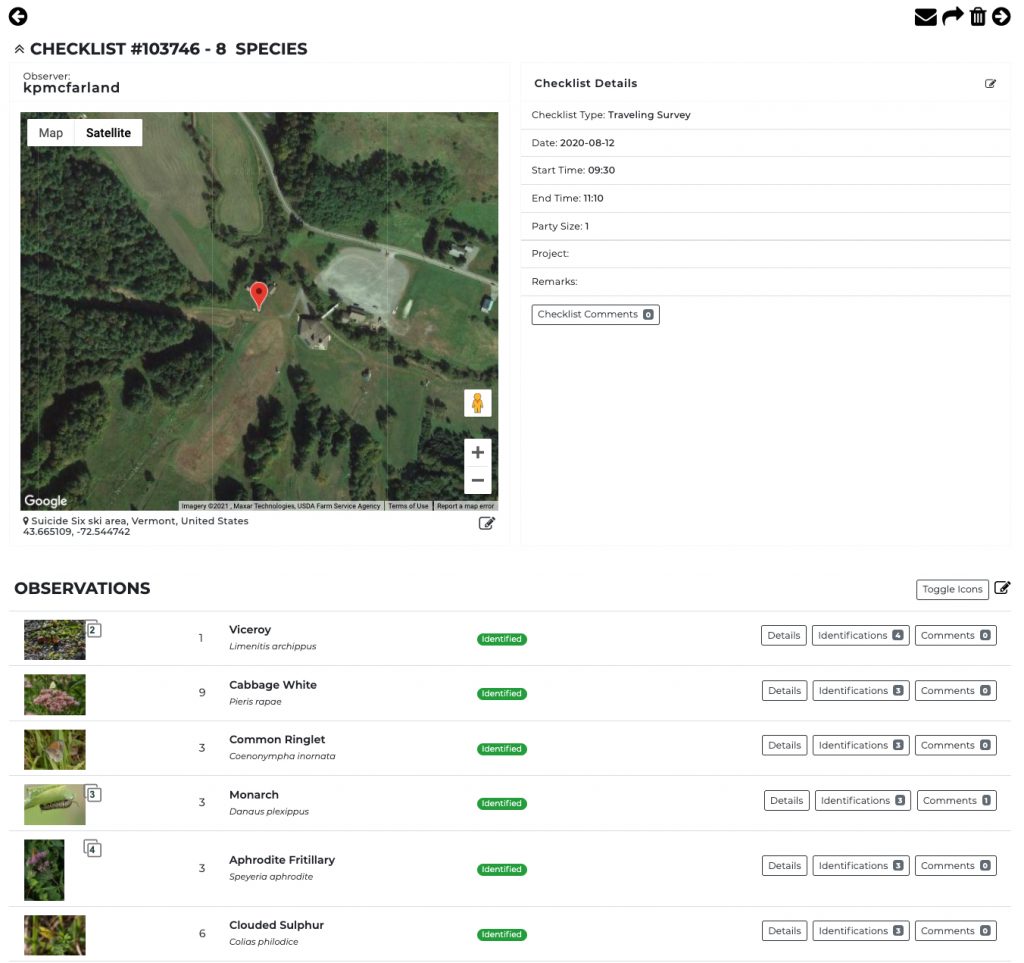(English) New eButterfly Updates Just in Time for Spring

We’re excited to announce some great improvements and new tools for eButterfly that we just released, with even more on the way. Our team has worked hard all winter to improve how the communications center operates, adding additional languages, upgrading the checklist submission process, improving the user experience for viewing checklists, updates that increase the performance of eButterfly, and many minor bug fixes.
Now you can use eButterfly in Spanish, French, or English as you report, identify and converse about butterflies from Panama to the Caribbean and north to the far reaches of the arctic. eButterfly covers over 40 countries and more than 3,000 species, many of them rarely studied, the e-Butterfly.org site allows anyone to report, store, organize and view vast amounts of data on butterfly distribution and diversity across the region. e-Butterfly.org displays lists, photos and real-time maps of butterflies from its ever-growing reservoir of nearly a half million butterfly observations shared by thousands of observers like you. Pick your prefered language and join the eButterfly community!
New and Improved Notifications Center
Explore the new look and experience we’ve added to the notifications center to facilitate sharing and communication between users. We hope this will create a better experience for you and build a more connected and engaged eButterfly community. 
A New and Improved Step 3 for Checklist Submissions
Similar to eBird, the ‘complete checklist‘ approach of eButterfly significantly increases the scientific value of each observation you share. Complete checklists allow you to collect abundance and information on co-occurring species while tallying effort (time and distance travelled), all at high spatial and temporal resolutions. When your checklists are joined with thousands of others and analyzed, these data enable us to build next-generation species distribution models that inform scientists on the changes of species range boundaries and areas of abundance across the landscape at an astounding level of temporal and spatial detail. It will help greatly with population monitoring and conservation decisions across the hemisphere. But we can’t do all of this without your help in gathering big butterfly data.
Some regions have hundreds of butterfly species to choose from on the checklist. We had to come up with a way to enter data that was easier for these butterfly diverse areas as well as those with more manageable lists. We redesigned the observation details page using “cards”. For each observation you make, simply create a card, fill out the details, and add photos. You can create cards for each species you are able to identify and even make cards for those you couldn’t–you can just identify to genus, family or even just as a butterfly. And then sit back and let other users help you learn the identity of your mystery observations. 
Clean New Design for Viewing Checklists
Check out the new layout for viewing and exploring checklists. We’ve made it easier for you to quickly view a checklist and then easily dig in deeper for exploration, identifications, and commenting.

New to eButterfly?
Check out our Help pages that will quickly get you started on using eButterfly. There’s a Quick Start Guide that takes you through each step when entering a butterfly checklist. Learn about our new crowd-sourced data vetting system and our identification tool and how you can quickly get started in helping to verify eButterfly data too. And learn how eButterfly helps you track your life, year, and month lists for countries, states and provinces, and even your favorite locations automatically!
Join an Upcoming eButterfly Webinar and Learn Even More
We invite you to join us for one of our webinars that will demonstrate how to use eButterfly and answer any of your questions.
- Thursday, March 30th at 4 PM Eastern Time
Register: https://vtecostudies-org.zoom.us/meeting/register/tJYude-vrTouG9CyNxCn1e0z2hEhirSaz_kv
- Tuesday, April 27th at 4 PM Eastern Time
Register: https://vtecostudies-org.zoom.us/meeting/register/tJYvcumgrTwrHNE756yImnlqbbFm5FsjZlgW
Help us Build Big Butterfly Data for Science and Conservation
eButterfly has already been a source of discovery for several new species expanding their ranges far beyond what was previously known. From first records for the continent, like the Perched Saliana butterfly photographed and shared on eButterfly at Estero Llano Grande State Park in Weslaco, Texas in 2016, to the first Quebec record for Long-tailed Skipper photographed by a visitor right in the Insectarium gardens in 2016– there are many new state and provincial species discovered by eButterfly users in North America. Expanding to Central America and the Caribbean will really accelerate the rate of new discoveries in those countries where there’s been a lack of reporting.
A peer-reviewed study by researchers at the University of Ottawa compared eButterfly data to professionally-collected observations to measure the extent of new distributional and regional species richness information that opportunistic citizen science generates. eButterfly contributed new distributional information for ~80% of butterfly species, with volunteers detecting species significantly earlier each year than professionals.
“This really speaks to the ability and power of eButterfly’s citizen science approach,” said lead author Peter Soroye.
Every time butterfly watchers raise binoculars and cameras to record a butterfly sighting, they collect important data. Recording the number, date, and location of each and every butterfly, no matter how common or rare, may seem trivial, even repetitive— but this detailed information can be invaluable to science and conservation. Butterflies act as early warning signals for habitat degradation, climate change, and other ecological forces. Citizen science programs like eButterfly allow volunteers to submit checklists from anywhere, and can quickly amass large volumes of both historic and current observations.
eButterfly is the tool for any butterfly enthusiast. You don’t have to be an expert to make a difference. Everyone can play a part, and it couldn’t be easier. Just login to eButterfly and contribute your butterfly discoveries!